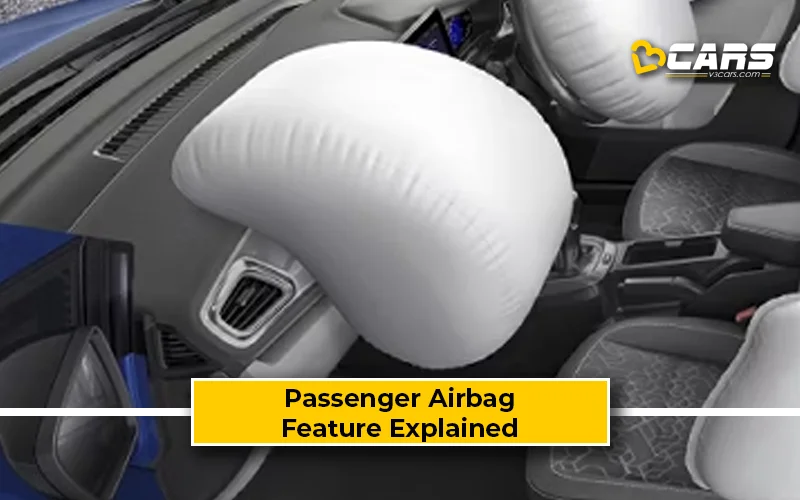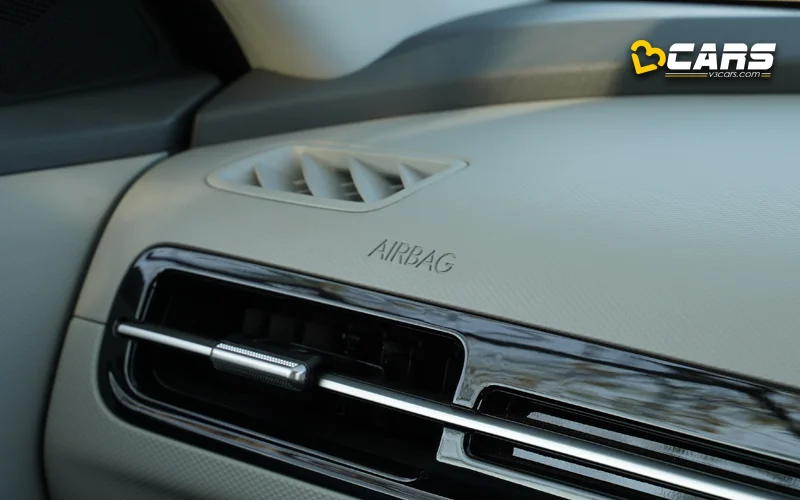Passenger Airbag – Feature Explained
The passenger airbag is a critical safety feature designed to protect the front-seat passenger during a frontal collision. Working in tandem with the seatbelt, it significantly reduces the risk of severe injuries. Let’s explore this essential component in detail.

What Is A Passenger Airbag?
The passenger airbag is a flexible, inflatable cushion housed within the dashboard on the front passenger side of a vehicle. It’s engineered to deploy rapidly in a frontal collision, creating a protective barrier between the passenger and the hard surfaces of the dashboard and windshield.
How Does A Passenger Airbag Work?
The deployment process of a passenger front airbag mirrors that of the driver’s front airbag:
- Sensors Detect Impact: Sensors, typically located in the front of the vehicle, detect the sudden deceleration characteristic of a frontal collision.
- Signal to Inflator: These sensors transmit an electrical signal to the airbag inflator module.
- Rapid Inflation: The inflator module initiates a chemical reaction, usually involving sodium azide, to produce a large volume of gas (nitrogen or argon) almost instantaneously. This gas fills the airbag.
- Cushioning Effect: The fully inflated airbag provides a soft, energy-absorbing cushion. It distributes the force of the passenger’s forward motion across their body, minimising the risk of head and chest trauma.
- Controlled Deflation: Vents in the airbag allow the gas to escape rapidly after inflation. This quick deflation is crucial for maintaining passenger visibility and mobility after the collision.
Why is A Passenger Front Airbag Important?
- Reduces Severe Injuries: Passenger airbags are highly effective in mitigating head and chest injuries, which are common in frontal impacts.
- Complements Seatbelts: They work in conjunction with seatbelts. The seatbelt restrains the body, while the airbag provides crucial cushioning for the head and chest.
- Standard Safety Feature: Passenger airbags are now standard equipment in all new cars sold in India since April 1, 2021, a testament to their life-saving potential.
What Are The Pros And Cons Of Passenger Front Airbags?
Here are the pros, or advantages, of passenger front airbags:
- Significantly reduces the risk of serious and fatal injuries in frontal collisions.
- Provides essential cushioning for the head and chest.
- Designed to work in harmony with seatbelts for optimal protection.
Here are the cons, or disadvantages, of passenger front airbags:
- Effective only in frontal collisions.
- Deployment can cause minor injuries such as abrasions or burns.
- Can pose a risk to small children or infants if the appropriate child restraint system is not used.
Is It Possible To Install Passenger Airbags From The Aftermarket?
Retrofitting a passenger airbag is technically very challenging and generally not recommended. Here's why:
- System Integration: It requires complex integration with the vehicle’s electronic control unit (ECU), sensors, and wiring.
- Reliability Concerns: Aftermarket installations may not meet the same safety standards as factory-installed systems, leading to potential malfunctions.
- Safety Risks: Improper installation can result in airbag deployment failure or unintended deployment, causing serious harm.
- Warranty Voidance: Modifying the vehicle’s safety systems can void the manufacturer’s warranty.
What Is The Cost Of Replacing A Passenger Airbag?
Replacing a deployed passenger airbag can be expensive. Costs vary depending on the vehicle make and model, and typically include:
- The airbag module itself.
- Dashboard or trim panel replacement.
- Labor charges for installation.
The total cost can range over Rs. 50,000 as it will require a dashboard or trim panel replacement.
Affordable Cars In India With Passenger Front Airbags
Since April 1, 2021, all cars sold in India offer driver and front passenger airbags as standard. Recently, India’s largest carmaker – Maruti Suzuki – updated their affordable cars, such as the Alto K10, Eeco and Celerio, with 6 airbags as standard, in a bid to make their cars safer.
Note: Check your Car EMI with our - Car Loan EMI Calculator
You can use our Fuel Cost Calculator to see how much any petrol, diesel or CNG car will cost to run based on the latest fuel price in your city.



0 Comments